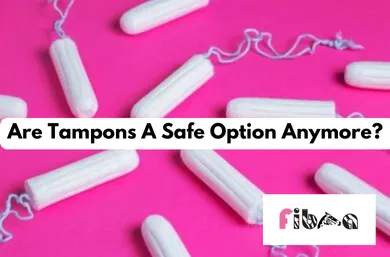
Fibra™ Updates: Cutting-Edge Technology Meets Women’s Health
Latest Blog Post

Tampons have been widely used since their creation in 1931, yet in 2024, experts say they might not be as safe as we thought. In a recent study by a group of scientists from the United States published in Environment International, tampons from top-rated brands were found to contain harmful metals in their products.
This has become a large conversation in the area of reproductive health, as individuals who are menstruating are now at risk of exposure to harmful and toxic metals.
This review summarizes the main findings of this paper and why there is concern for the preservation of reproductive health.
What Did They Look For?
There is little to no research on the presence of metals and metalloids in tampons and how their presence could affect women’s reproductive health. This research investigated the presence of the following sixteen metals in brand-name tampons:
arsenic, barium, calcium, cadmium, cobalt, chromium, copper, iron, mercury, manganese, nickel, lead, selenium, strontium, vanadium, and zinc.
Tampons of different absorbency levels (i.e. regular, super) were examined for the presence of metals and their concentrations. The cause for concern is upon the discovery of large concentrations of these harmful metals. This is because this would mean individuals who use tampons when menstruating are unknowingly putting themselves at risk of exposure to these metals and possibly causing damage to their reproductive organs and overall wellbeing.
What Did They Find?
From this study, it was found that all of these metals were present in all the tampons. Specifically, zinc, arsenic and lead were present in higher concentrations than the rest. These findings are alarming, especially the large presence of arsenic and lead as these metals are toxic to the human body. The other metals were present but in trace amounts. Trace metals are small amounts of metal that are present in a product. Typically, trace metals are present in many items such as cereals, and are not cause for large concern regarding overall health.
This study is groundbreaking, as it is one of the first published studies to discover these metals in tampons.
Should I Be Concerned?
When it comes to women’s reproductive health, this study has brought a new conversation to the table. Tampons are generally not the healthiest and safest feminine hygiene product yet they have become widely popular due to their discreteness and comfortability.
To completely rule out tampons as a safe option, more research will need to be conducted on the transfer of these metals onto the human body and the effects.
References
Shearston, J. A., Upson, K., Gordon, M., Do, V., Olgica Balac, Nguyen, K., Yan, B., Marianthi-Anna Kioumourtzoglou, & Schilling, K. (2024). Tampons as a source of exposure to metal(loid)s. Environment International, 108849–108849. https://doi.org/10.1016/j.envint.2024.108849
Sidharthan, D. C. (2024, July 8). Are your tampons poisoning you? Study findings 16 metals in widely available tampon brands. News-Medical. https://www.news-medical.net/news/20240708/Are-your-tampons-poisoning-you-Study-findings-16-metals-in-widely-available-tampon-brands.aspx?utm_source=news_medical_newsletter&utm_medium=email&utm_campaign=women_s_health_newsletter_10_july_2024
Menstrual Tampon | Embryo Project Encyclopedia. (n.d.). Embryo.asu.edu. Retrieved July 17, 2024, from https://embryo.asu.edu/pages/menstrual-tampon#:~:text=Up%20until%20the%20invention%20of

We do this for ourselves, our mothers, grandmothers, sisters, daughters, and granddaughters—because every woman deserves the tools to understand and care for her body with confidence. Together, we’re building a healthier, more informed future for generations to come.
© 2024 Fibra Inc.Ca.com, All Rights Reserved